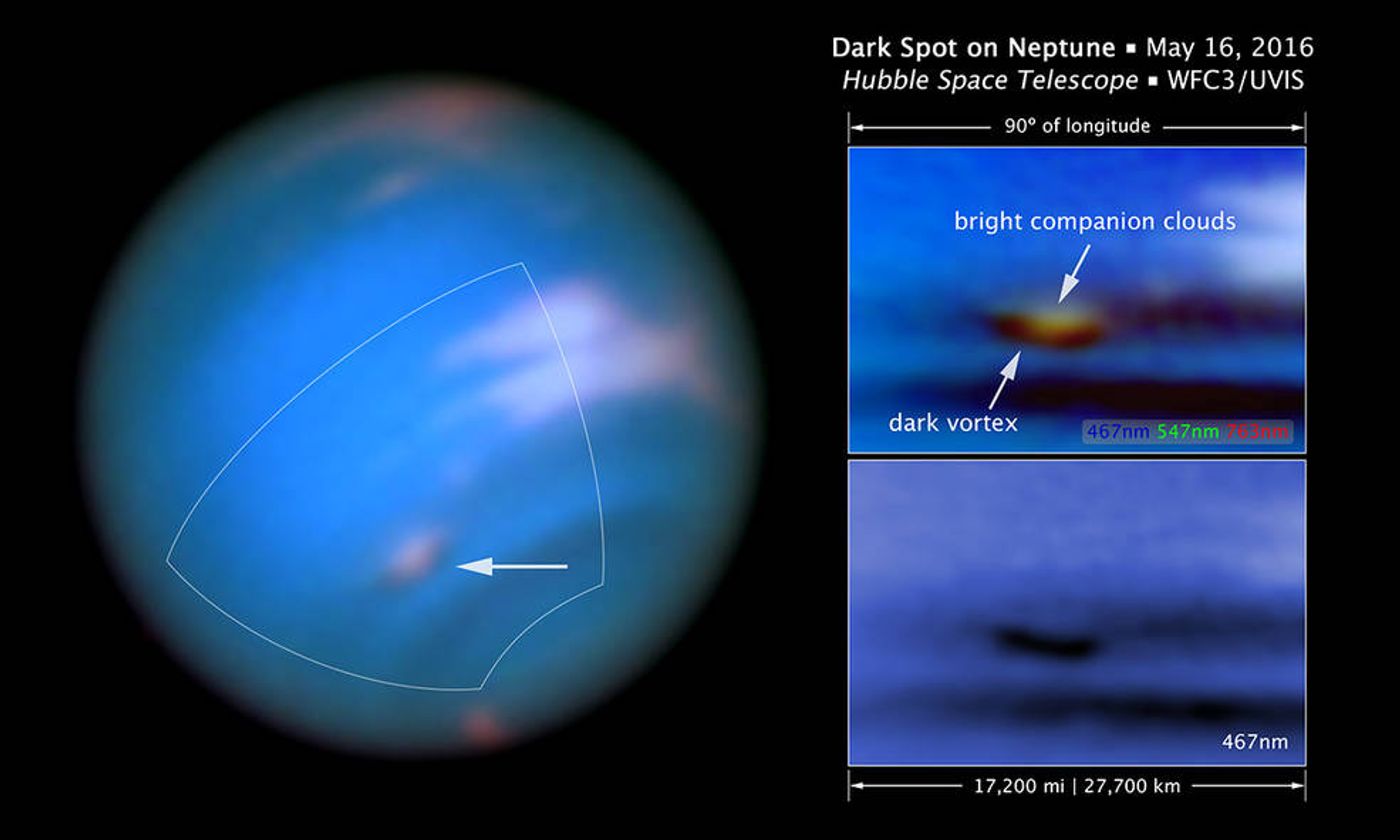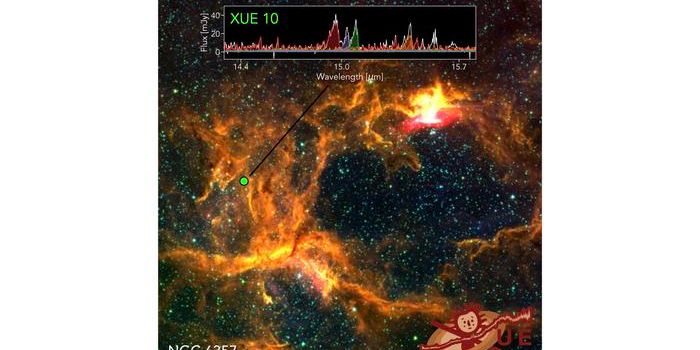Hubble Spies a New Dark Spot in Neptune's Atmosphere
Neptune is the outermost planet in our solar system, just before Pluto, which used to be a planet, but is now considered a dwarf planet. Neptune is a gassy planet, just like Jupiter, but it’s smaller and has a blue color to it.
Of course, Neptune isn’t a perfectly-smooth ball of blue; there are imperfections in the planet’s atmosphere that evolve over time, and NASA says the Hubble Space Telescope has just spotted a new imperfection – a dark vortex.

Image Credit: NASA, ESA, and M.H. Wong and J. Tollefson (UC Berkeley)
The images were obtained on May 16, 2016, and they show what appear to be a brand new black circling vortex. Mike Wong from the University of California, Berkeley is credited with having made the discovery.
The vortex appears near a disturbance that was originally spotted by Outer Planet Atmospheres Legacy (OPAL) in September of 2015. Hubble’s findings actually confirm that the disturbance was indeed a vortex.
NASA does note in their statement that similar structures in Neptune’s atmosphere were found in the 80’s and 90’s by Hubble and Voyager 2, but this is an important discovery because it’s the first time that one of these dark vortexes has been documented in Neptune’s atmosphere in the 21st century.
The dark sections of these vortices are surrounded by lighter “companion clouds,” which Hubble Space Telescope was also able to point out. They are high-pressure systems in which the air around the system is forced higher into the atmosphere. There, it freezes into crystals and likely causes the bright areas we see in the images.
"Dark vortices coast through the atmosphere like huge, lens-shaped gaseous mountains," Wong said. "And the companion clouds are similar to so-called orographic clouds that appear as pancake-shaped features lingering over mountains on Earth."
Because Neptune is so far away, it can be difficult to properly observe the planet’s vortices. They tend to change a lot as time goes by, exhibiting different shapes and sizes, and even appearing in different areas across the planet.
By studying these features of Neptune, we can not only better understand the other-worldly planets in our Solar System, but it can also help us understand other gassy exoplanets throughout the universe.
Source: NASA








